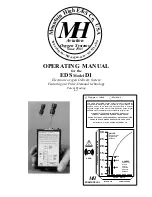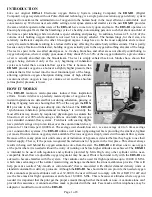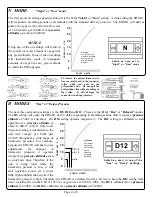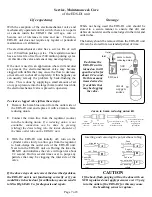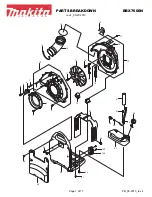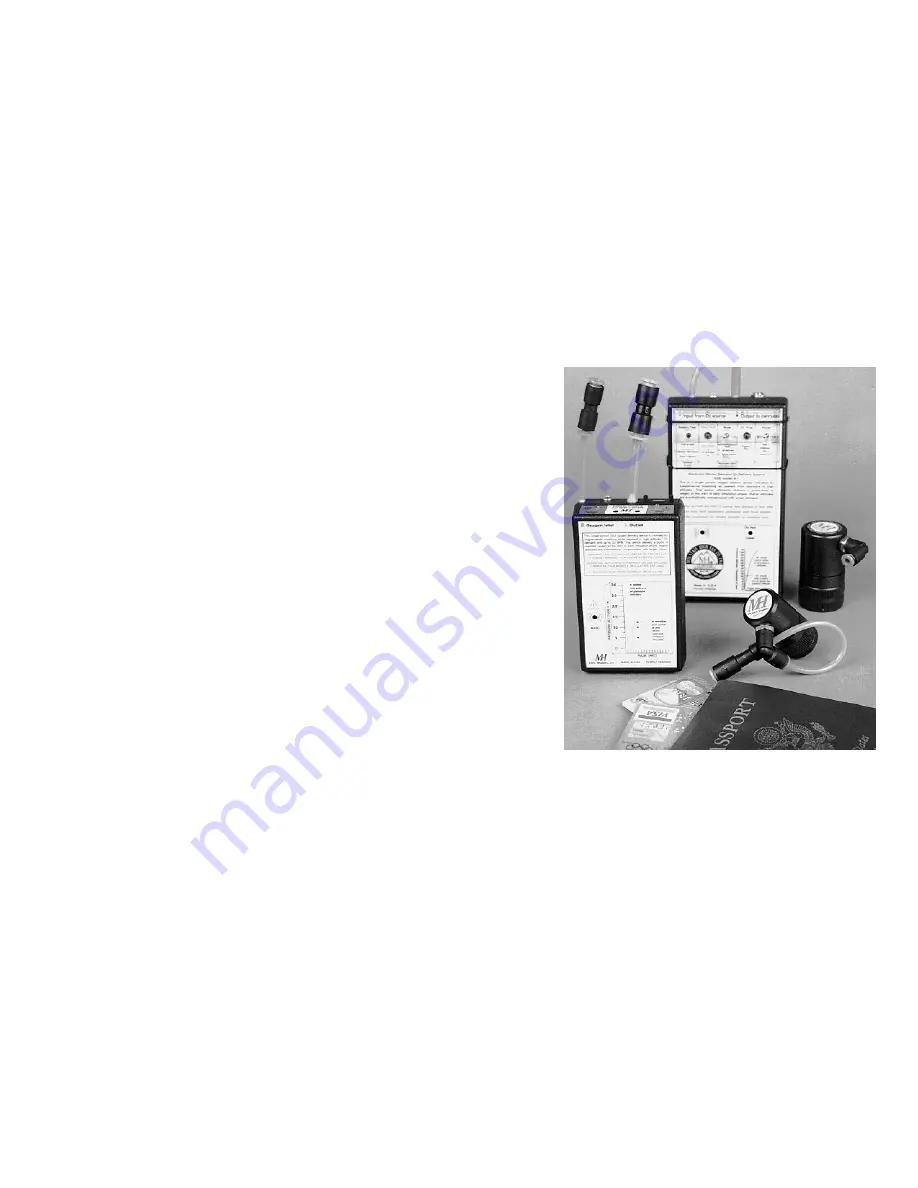
INTRODUCTION
Like our original EDS-A1 Electronic oxygen Delivery System (Analog Computer) the EDS-D1 (Digital
Computer) oxygen system with our Pulse-Demand technology is a single person aviation oxygen delivery system
designed to maximize the administration of oxygen into the human body in the most efficient, comfortable and
convenient way. With new user selectable settings, total apnea alarm and smaller size the new EDS-D1 provides
the same reliable operation that users of the EDS-A1 have come to rely upon and more. The EDS-D1 operates on
known physiological facts that the breathing cycle of a healthy, non-smoking person is such that about one-third of
the time is spent inhaling while two-thirds is spent exhaling and pausing. In addition, between 2/3 to 3/4 of the
volume of air holding oxygen inhaled is not used but is simply exhaled. The human lungs, for their size, are
relatively inefficient compared to other life-support organs. Lungs have to be the most adaptable and are most
easily stressed at altitudes resulting in a reduced efficiency effecting the entire body within seconds. This is partly
because only a fraction of inhaled air, holding oxygen, actually gets to the oxygen absorbing alveolar of the lungs.
The rest is spent in the so-called dead-spaces, i.e. trachea, bronchus, and other areas not directly contributing to
oxygen absorption, where it simply goes unused. Only about 25% to 30% of the oxygen inhaled in a given volume
of air is actually absorbed into the bloodstream. The rest is simply exhaled back out. Studies have shown that
oxygen being delivered only at the very beginning of inhalation
cycles acts better than a constant-flow system. This is because the
EDS-D1 provides oxygen as a bolus at a slightly higher pressure than
ambient that is first to lead into the most functional part of the lungs,
allowing optimum oxygen absorption during times of high altitude
excursions where oxygen is less per volume of air and the absolute
(atmospheric) pressure is lower.
HOW IT WORKS
The EDS-D1 monitors micro-pressures induced from inspiration
efforts. In turn it delivers a precisely metered pulse of oxygen at the
instant inspirations are detected but not during exhalation, pausing or
talking. Ongoing tests are showing that 90% of the oxygen the EDS-
D1 provides to the lungs goes directly into the blood. The EDS-D1
"synchronous inhalation pulse-demand technique" is currently the
most efficient way known by respiratory physiologists to saturate the
blood to well over 90% while using as little as one-tenth the oxygen
over standard constant-flow systems. Field tests with soaring flights
have yielded savings of up to ten times over the conventional delivery
protocol of 1 liter/min. per 10,000 feet. The average user should, however, see an average of 4 to 6 times savings
over constant-flow systems. The EDS-D1 utilizes well known physiological facts providing the smallest, lightest
yet most efficient aviation oxygen system available. Precious oxygen is simply wasted with constant flow systems.
Because of this, many pilots wait until some sort of indication of hypoxia is detected before they begin to use their
limited supply. That is, if the person recognized his indications for hypoxia in the first place. This almost always
results in being well behind the oxygen saturation curve from the start. The EDS-D1 will allow one to use oxygen
at the point where it is needed without the worry of running out before higher altitudes are achieved. The EDS-D1
is intended to be used with regulators and cylinders provided by Mtn. High. Any other cylinder with a near-
compatible fixed-flow or adjustable oxygen regulator may be used. Pilots who intend to fly with the EDS-D1 are
advised to become familiar with the system. The cannula can be used for flight operations up to 18,000 ft. MSL.
which takes advantage of the natural moisturizing exchange mechanism the sinus membranes provide. This will
help prevent so-called "dry-mouth or cotton-mouth" that is associated with diluter demand delivery units or
standard constant-flow delivery protocols. Although the EDS-D1 has shown that it can provide the needed oxygen
with a cannula at pressure altitudes well over 32,000 ft. the user will need to comply with FAA FAR 23.1447 and
use the face mask for flight operations at and above 18,000 ft. MSL. This is because at altitudes where oxygen is
needed it is important that the pilot get the proper amount through either the mouth or nose. A cannula alone can't
provide this assurance. A cannula and face mask is provided with the unit. Face masks, with microphones, may be
adapted or modified to work with he EDS-D1.
Page 1 of 8
EDS-D1
EDS-A1

